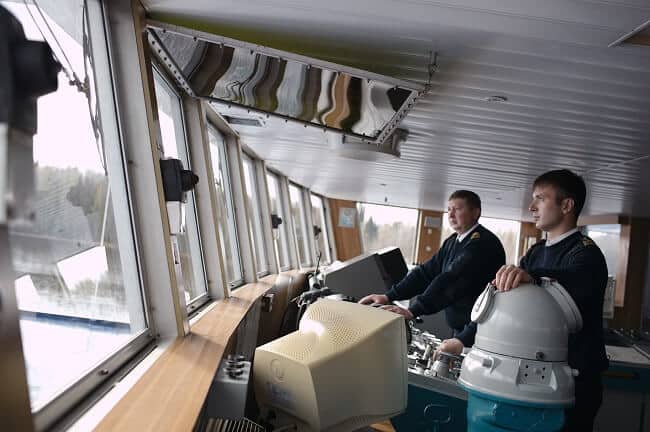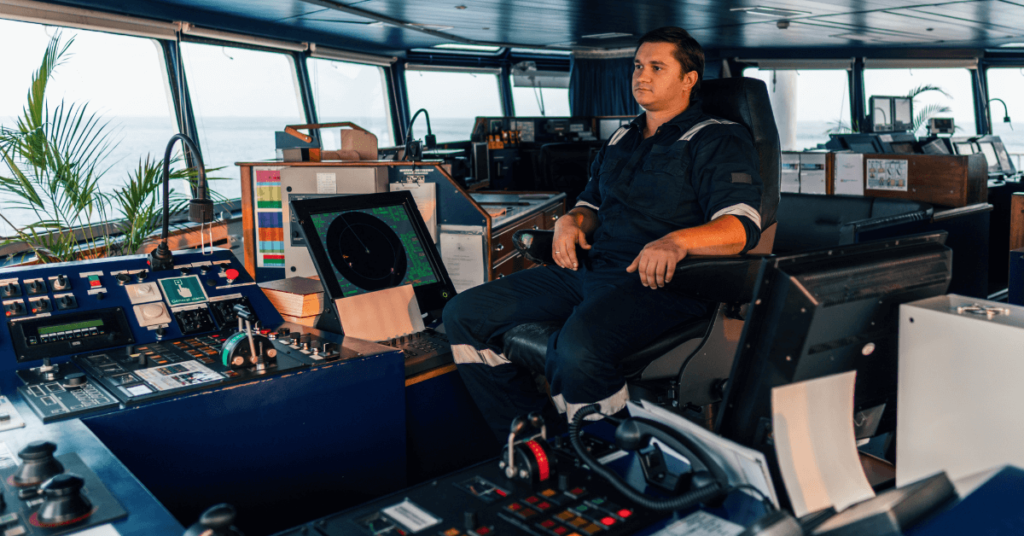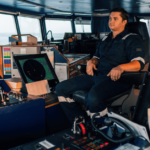What is Note of Protest (NoP) On Ships?
The Note of Protest is a declaration under oath by the Master of the ship. It covers circumstances beyond master’s control which may cause/have caused loss or damage to the ship or cargo or may have caused the Master to leave an unsafe port, which may render the owners liable for legal action by another party.
It is a notarized statement obtained after a ship enters port after a rough voyage. Its purpose is to protect the ship’s charterer or owner from liability for damage to the cargo, the ship or to other ships in a collision, where this was caused by the perils of the sea (for example, bad weather).

Credits: darn13/depositphotos.com
The Note of Protest can be better understood after reading the following:
- This NoP has to be made before a notary public (public officer constituted by law), magistrate (a civil officer who administers the law) or consul (diplomat) or other authority without delay and within 24 hours of arriving at port
- When making the NoP, the Master has the right extend the NoP to cover unforeseeable circumstances (vis a vis the NoP)
- If the NoP is made in relation to the cargo, the same should be made BEFORE unloading the cargo. This is done to exclude any room for legal liability directed towards the vessel for damaged cargo
- If instructed by the owner, the NoP may be forwarded to all parties concerned with copies kept with the owner and onboard
- NoP should be noted/is applicable to each port of discharge and not just for the first port of call seeing as maritime trade involves cargo that might involve more than one port, i.e, same cargo discharged at different ports
The NoP is applicable when
- When the ship has experienced adverse weather conditions during the voyage which might have resulted in damage to the cargo
- The ship is already damaged and it does not matter if further damage is caused/might be caused
- Due to circumstances beyond the control of the Master, ventilation of the cargo was not carried out
- The cargo which is shipped is such that it is likely to be damaged during the voyage (the bill of lading, in this case, must be endorsed after liaising with the P&I club and the shipper)
- The charterer(s) or the agent(s) commit a serious breach of the terms of the charter party. This could include but not be limited to undue delays, refusal to load cargo, discrepancies in the cargo mentioned as per charter party etc
- The consignee fails to discharge cargo, take delivery or cover freight associated with the cargo with vis a vis the charter party and the bill of lading
- Following a General Average Act (GA is the apportionment of financial liability for the loss arising from the jettisoning of cargo by dividing the costs among all parties)
- Allowed by the charter party (included but not limited to) – refusal to pay demurrage (a charge payable to the owner of a chartered ship on failure to load or discharge the ship within the time agreed), sending the vessel to unsafe port etc
Extended Protests
The NoP is not an all-encompassing document but may be open to legal liability as the extent of damage cannot always be gauged at the initial stage. For this purpose, the Master may reserve his right to extend the protest. This extension can be availed when data associated with the cargo is obtained and ascertained after necessary survey. It is therefore important during noting the protest to include the clause “reserve the right to extend the protest at a time and place convenient”
Procedure for Noting Protests
The Master, when noting the protest, must do so in presence of one or more crew members who will be classified as witnesses with regard to the NoP. The witness must possess the knowledge pertaining to the circumstances causing the NoP, the facts of which are sent to the notary public, magistrate, consul or as advised by the agents. All documentation supporting the facts must be in possession as supporting proof to the NoP such as the official log book, deck log book, engine log book etc. The NoP, when printed, must be done as per the number of parties to which a copy is to be sent. An example of an NoP can be seen here.
As it can be understood from this, the NoP is a rather important narrative that covers the Master and the owner from legal liability rendering the carriage of cargo economically viable against probable charges.
References: Maritime Legislation and Shipboard Management for Deck Officers by Capt. Naik and Capt. Dubey
Disclaimer: The authors’ views expressed in this article do not necessarily reflect the views of Marine Insight. Data and charts, if used, in the article have been sourced from available information and have not been authenticated by any statutory authority. The author and Marine Insight do not claim it to be accurate nor accept any responsibility for the same. The views constitute only the opinions and do not constitute any guidelines or recommendation on any course of action to be followed by the reader.
The article or images cannot be reproduced, copied, shared or used in any form without the permission of the author and Marine Insight.
Do you have info to share with us ? Suggest a correction
Latest Shipboard Guidelines Articles You Would Like:

About Author
Shilavadra Bhattacharjee is a shipbroker with a background in commercial operations after having sailed onboard as a Third Officer. His interests primarily lie in the energy sector, books and travelling.
Subscribe To Our Newsletters
By subscribing, you agree to our Privacy Policy and may receive occasional deal communications; you can unsubscribe anytime.
















Do I have to enter?